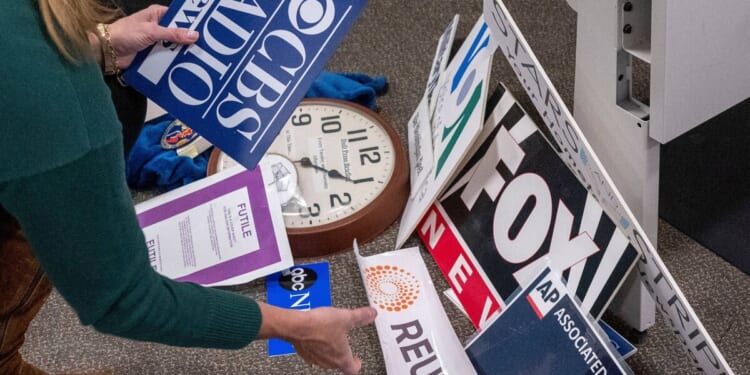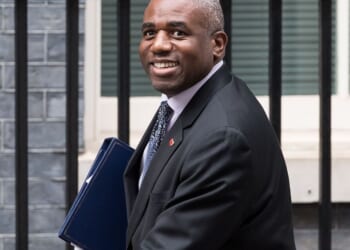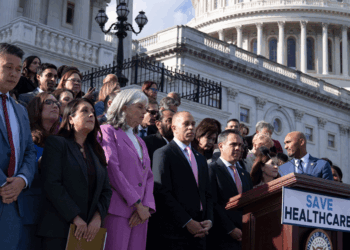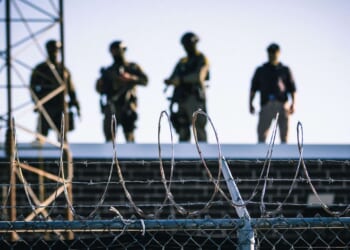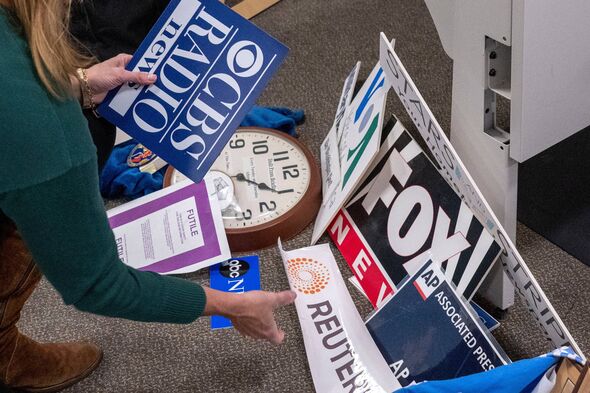
Washington Post reporter Tara Copp saves the name plaques from various news organizations as she and members of the media pack up their belongings in the press area in the Pentagon, Wednesday, Oct. 15, 2025 in Washington. (AP Photo/Kevin Wolf) (Image: Copyright 2025 The Associated Press. All rights reserved)
Dozens of reporters turned in access badges and exited the Pentagon on Wednesday rather than agree to government-imposed restrictions on their work, pushing journalists who cover the American military further from the seat of its power. The U.S. government has called the new rules “common sense.”
News outlets were nearly unanimous in rejecting new rules imposed by Defence Secretary Pete Hegseth that would leave journalists vulnerable to expulsion if they sought to report on information – classified or otherwise – that had not been approved by Hegseth for release.
Many of the reporters waited to leave together at a 4 p.m. deadline set by the Defence Department to exit the building. As the hour approached, boxes of documents lined a Pentagon corridor and reporters carried chairs, a copying machine, books and old photos to the parking lot from suddenly abandoned workspaces. Shortly after 4, about 40 to 50 journalists left together after handing in their badges.
“It’s sad, but I’m also really proud of the press corps that we stuck together,” said Nancy Youssef, a reporter for The Atlantic who has had a desk at the Pentagon since 2007. She took a map of the Middle East out to her car.
It is unclear what practical impact the new rules will have, though news organisations vowed they’d continue robust coverage of the military no matter the vantage point.
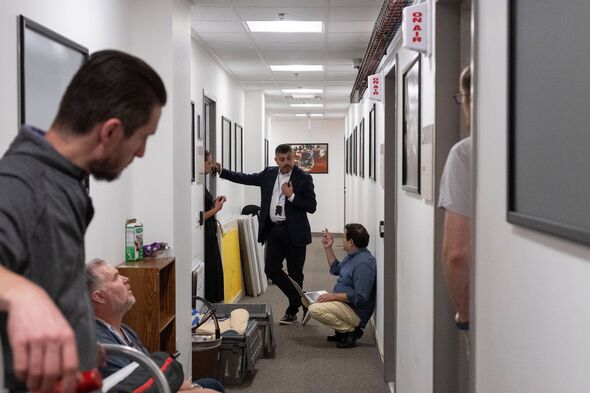
Members of the media pack up their belongings in the press area of the Pentagon, Wednesday, Oct. 15, 2025 in Washington. (AP Photo/Kevin Wolf) (Image: Copyright 2025 The Associated Press. All rights reserved)
Images of reporters effectively demonstrating against barriers to their work are unlikely to sway supporters of President Donald Trump, many of whom resent journalists and applaud his efforts to make their jobs more difficult. Trump has been involved in court fights against The New York Times, CBS News, ABC News, the Wall Street Journal and The Associated Press in the past year.
Speaking to reporters at the White House on Tuesday, Trump backed his Defence Secretary’s new rules. “I think he finds the press to be very disruptive in terms of world peace,” Trump said. “The press is very dishonest.”
Even before issuing his new press policy, Hegseth, a former Fox News Channel host, has systematically choked off the flow of information. He’s held only two formal press briefings, banned reporters from accessing many parts of the sprawling Pentagon without an escort and and launched investigations into leaks to the media.
He has called his new rules “common sense” and said the requirement that journalists sign a document outlining the rules means they acknowledge the new rules, not necessarily agree to them. Journalists see that a distinction without a difference.
“What they’re really doing, they want to spoon-feed information to the journalist, and that would be their story. That’s not journalism,” said Jack Keane, a retired U.S. Army general and Fox News analyst, on Hegseth’s former network.
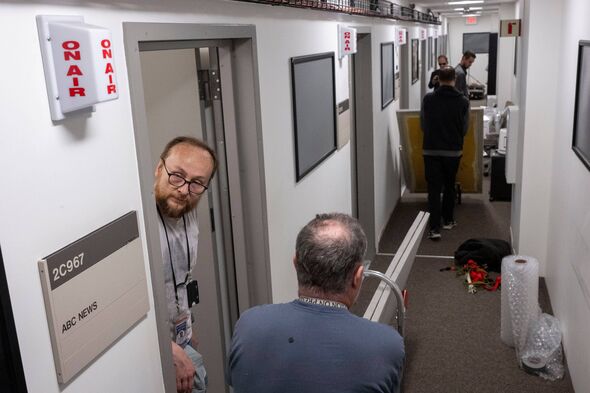
Members of the media pack up their belongings in the press area of the Pentagon, Wednesday, Oct. 15, 2025 in Washington. (AP Photo/Kevin Wolf) (Image: Copyright 2025 The Associated Press. All rights reserved)
When he served, Keane said he required new brigadier generals to take a class on the role of the media in a democracy so they wouldn’t be intimidated and also see reporters as a conduit to the American public. “There were times when stories were done that made me flinch a little bit,” he said. “But that’s usually because we had done something that wasn’t as good as we should have done it.”
Youssef said it made no sense to sign on to rules that stated reporters should not solicit information from military officials. “To agree to not solicit information is to agree to not be a journalist,” she said. “Our whole goal is soliciting information.”
Several reporters posted on social media when they turned in their press badges.
“It’s such a tiny thing, but I was really proud to see my picture up on the wall of Pentagon correspondents,” wrote Heather Mongillo, a reporter for USNINews, which covers the Navy. “Today, I’ll hand in my badge. The reporting will continue.”
Mongillo, Youssef and others emphasised that they’ll continue to do their jobs no matter where their desks are. Some sources will continue to speak with them, although they say some in the military have been chilled by threats from Pentagon leadership.
In an essay, NPR reporter Tom Bowman noted the many times he’d been tipped off by people he knew from the Pentagon and while embedded in the military about what was happening, even if it contradicted official lines put out by leadership. Many understand the media’s role.
“They knew the American public deserved to know what’s going on,” Bowman wrote. “With no reporters able to ask questions, it seems the Pentagon leadership will continue to rely on slick social media posts, carefully orchestrated short videos and interviews with partisan commentators and podcasters. No one should think that’s good enough.”
The Pentagon Press Association, which has 101 members representing 56 news outlets, has spoken out against the rules. Organisations from across the media spectrum, from legacy organisations like The Associated Press and The New York Times to conservative outlets like Fox and Newsmax, told their reporters to leave instead of signing the new rules.
Only the conservative One America News Network signed on. Its management likely believes it will have greater access to Trump administration officials by showing its support, Gabrielle Cuccia, a former Pentagon reporter who was fired by OANN earlier this year for writing an online column criticising Hegseth’s media policies, told the AP in an interview.

